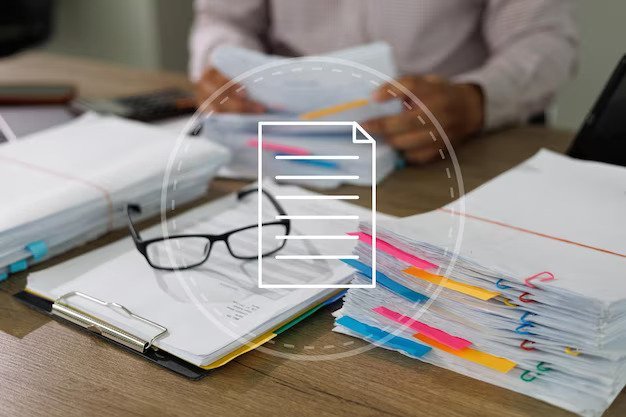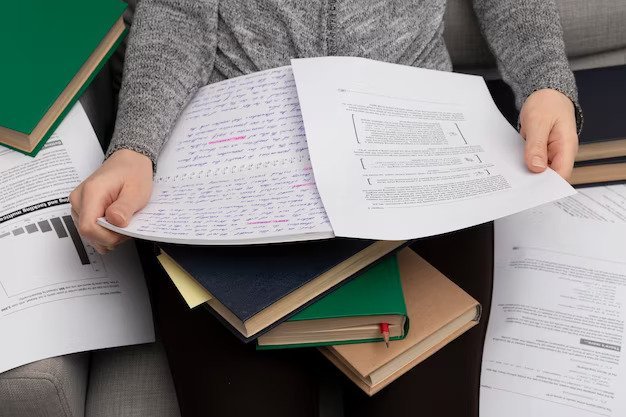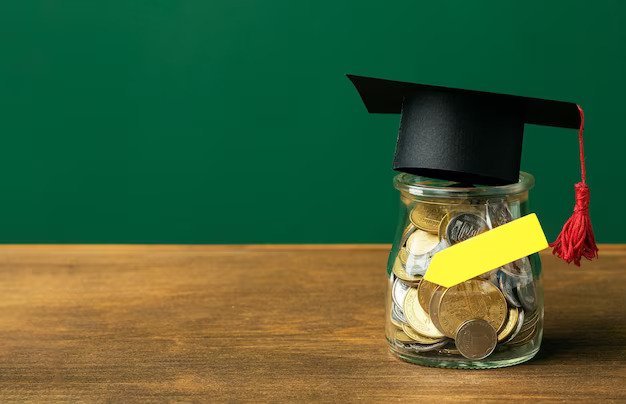Student Loan : Getting a college education can be a wonderful experience that opens up many opportunities in life. However, it often comes with a hefty price tag in the form of student loans. The burden of student loan debt can be overwhelming, making it difficult to achieve your financial goals. But there is hope! There are programs available that can help you get your student loans forgiven, meaning you won’t have to repay them. In this article, we will discuss how to apply for student loan forgiveness in simple terms, so you can take steps towards a debt-free future.
1. Understand The Types Of Student Loan Forgiveness
Before you start the application process, it’s crucial to understand the different types of student loan forgiveness programs available. Not all loans are eligible for forgiveness, and each program has its own set of requirements. Here are some common types of student loan forgiveness programs:
- Public Service Loan Forgiveness (PSLF): This program is designed for individuals who work in public service jobs, such as government or non-profit organizations. To qualify, you must make 120 qualifying payments while working full-time in a qualifying job.
- Teacher Loan Forgiveness: Teachers who work in low-income schools or educational service agencies may be eligible for this program. The amount forgiven depends on the subject area taught and the number of years of service.
- Income-Driven Repayment (IDR) Forgiveness: IDR plans set your monthly loan payments based on your income and family size. After making payments for 20 or 25 years (depending on the specific plan), any remaining balance is forgiven.
- Military Service Loan Forgiveness: Members of the military, including the Army, Navy, Air Force, National Guard, and Coast Guard, may be eligible for various loan forgiveness programs.
- State-Specific Forgiveness Programs: Some states offer loan forgiveness programs for specific professions, like healthcare or law enforcement.
- Loan Forgiveness For Non-Profit Employees: Certain non-profit organizations offer loan forgiveness as an employment benefit.
It’s essential to research and determine which forgiveness program(s) you may qualify for before proceeding with your application.
2. Check Eligibility Requirements

Once you’ve identified the forgiveness program that suits your situation, you need to check whether you meet the eligibility requirements. Eligibility criteria can vary depending on the program, but here are some common factors to consider:
- Type Of Loan: Most forgiveness programs apply to federal student loans, such as Direct Loans, Federal Family Education Loans (FFEL), and Perkins Loans. Private loans are generally not eligible for forgiveness.
- Employment: Some programs, like PSLF, require you to work in specific types of jobs or industries for a certain number of years.
- Payment History: Maintaining a consistent payment history is essential for most forgiveness programs. Missing payments or defaulting on your loans may disqualify you.
- Income: Income-based forgiveness programs, like IDR, consider your income and family size when determining eligibility.
- Loan Status: Your loans must be in good standing to qualify for forgiveness. This means no defaulted loans or delinquencies.
- Repayment Plan: Ensure you are enrolled in an eligible repayment plan, especially for income-driven forgiveness programs.
3. Choose The Right Repayment Plan

Selecting the appropriate repayment plan is crucial when applying for loan forgiveness. Different programs have specific repayment plans that qualify for forgiveness. The most common plans include:
- Income-Driven Repayment Plans: These plans adjust your monthly payments based on your income and family size. Examples include Income-Based Repayment (IBR), Pay As You Earn (PAYE), Revised Pay As You Earn (REPAYE), and Income-Contingent Repayment (ICR).
- Standard Repayment Plan: This plan has fixed monthly payments over a 10-year period.
- Graduated Repayment Plan: Payments start lower and increase over time, typically every two years, with a 10-year repayment period.
- Extended Repayment Plan: This plan extends your repayment period up to 25 years, with either fixed or graduated payments.
Your choice of repayment plan depends on your financial situation and which loan forgiveness program you plan to pursue. It’s essential to select the plan that aligns with your goals and circumstances.
4. Gather Required Documents And Information

To apply for student loan forgiveness, you’ll need to provide specific documents and information. While the exact requirements may vary based on the program, here are some common documents you may need:
- Personal Identification: Proof of your identity, such as a driver’s license or Social Security card.
- Employment Verification: For programs like PSLF, you’ll need to provide documentation of your employment, including pay stubs or a letter from your employer.
- Loan Information: Details about your loans, including the loan servicer’s name and contact information, loan account numbers, and loan balance statements.
- Tax Returns: Some forgiveness programs may require copies of your federal income tax returns to verify your income.
- Certification Forms: You may need to complete certification forms periodically to verify your eligibility and progress toward forgiveness.
Make sure to gather all the necessary documents and information before starting the application process to avoid delays or complications.
5. Apply For Student Loan Forgiveness

Once you’ve reviewed the program requirements, checked your eligibility, selected the right repayment plan, and gathered the required documents, it’s time to apply for student loan forgiveness. The application process can vary depending on the forgiveness program, but here’s a general outline of the steps involved:
- Contact Your Loan Servicer: Reach out to your loan servicer to discuss your intention to apply for forgiveness. They can provide guidance on the specific application process and any additional requirements.
- Complete The Application: Fill out the forgiveness application form for your chosen program. You can typically find these forms on the program’s official website or by contacting your loan servicer.
- Submit Supporting Documents: Include all necessary documents, such as employment verification, tax returns, and loan information, with your application.
- Review And Submit: Carefully review your application and double-check that all information is accurate and complete. Once satisfied, submit the application according to the program’s instructions.
- Keep Records: Make copies of all submitted documents and correspondence for your records. It’s essential to have a record of your application in case any issues arise.
6. Wait For A Decision
After submitting your application, you’ll need to wait for a decision from the loan forgiveness program. Processing times can vary, so be patient. During this period, continue making your loan payments as required until you receive confirmation of loan forgiveness.
7. Monitor Progress And Follow Up

It’s essential to stay informed about the status of your application and your progress toward loan forgiveness. Here are some steps to consider during this phase:
- Certification Of Employment: If you’re pursuing PSLF, make sure to submit the Employment Certification Form annually or whenever you change jobs to track your qualifying payments.
- Keep Records: Maintain a file with all your loan-related documents and communications with your loan servicer.
- Follow Up: If you haven’t received a decision within the expected timeframe, follow up with the loan servicer or program administrator to inquire about the status of your application.
- Stay Informed: Keep yourself updated on any changes to the forgiveness program’s requirements or application procedures.
8. Receive Loan Forgiveness
Once your application is approved, you’ll receive notification of your loan forgiveness. The process may involve the complete discharge of your remaining loan balance, or it may result in a partial forgiveness, depending on the program’s terms.
- Tax Considerations: Be aware that the amount forgiven may be considered taxable income in some cases. Consult with a tax professional to understand the tax implications of your forgiveness.
- Update Loan Servicer: If your loans were on an income-driven repayment plan, inform your loan servicer of the forgiveness to ensure accurate records.
Conclusion
Student loan forgiveness can be a lifeline for individuals burdened with student loan debt. However, navigating the application process can be complex, which is why it’s essential to understand the different forgiveness programs, meet eligibility requirements, choose the right repayment plan, gather the necessary documents, and follow the application steps diligently.
Remember that patience and persistence are key when applying for student loan forgiveness. Stay informed, keep records, and be proactive in tracking your progress toward a debt-free future. With determination and the right guidance, you can successfully apply for student loan forgiveness and lighten the financial load of your educational journey
Also Read : How To Secure Stable Mortgage Interest Rates In Loan?
FAQs
1. What is student loan forgiveness?
Student loan forgiveness is a program that allows borrowers to have a portion or all of their federal student loans forgiven, meaning they no longer have to repay them.
2. Who qualifies for student loan forgiveness?
Qualifications vary depending on the type of forgiveness program. Common criteria include working in a specific profession (e.g., public service), making a certain number of qualifying payments, and demonstrating financial hardship.
3. How do I know if I have federal student loans?
You can check your federal student loans by logging into the Federal Student Aid website or contacting your loan servicer.
4. What is Public Service Loan Forgiveness (PSLF)?
PSLF is a program that forgives federal student loans for borrowers who work full-time for a qualifying public service or non-profit organization and make 120 qualifying payments.
5. How do I apply for Public Service Loan Forgiveness (PSLF)?
To apply for PSLF, you must submit the Public Service Loan Forgiveness (PSLF) application form to your loan servicer after making 120 qualifying payments.
Source Image : Freepik.com




